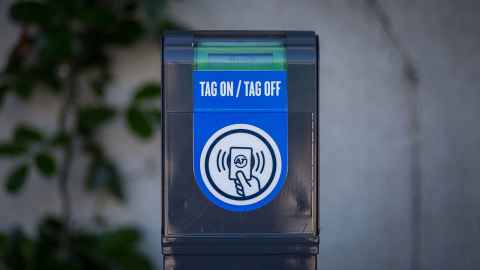Who really wants Auckland’s light rail plan?
3 February 2022
Opinion: Government plans for costly tunnelled light rail instead of traditional light rail will make both pro- and anti-transit groups unhappy, writes Timothy F Welch.

A good compromise means all parties are unhappy, as the old cliché goes. For Auckland, tunnelled light rail is likely no exception.
The Government has announced it will pursue partially tunnelled light rail for Auckland. This option was selected from among three potential rail investments. They were dubbed light rail, light metro and tunnelled light rail.
Light rail runs along existing corridors and often has more frequent and closer-spaced stops. Metro, or in this case 'light metro', runs on a completely grade-separated right of way, meaning it is either below ground or elevated, moves faster than light rail, but has stations that are spaced farther apart. Tunnelled light rail is an attempt to save on the cost of a metro system by using lighter vehicles but still creating a separated right of way for part of the line.
So, what's the issue with the recent announcement? There is a long list. The Government has selected a system that will take much longer to develop than traditional light rail and will cost nearly twice as much.
The economics of the tunnelled light rail option makes for a weak business case. The benefit-cost ratio, the number used to compare potential projects' relative benefits and costs, is 1.1. This BCR is relatively low, providing an estimated 10 percent more benefit than cost. However, the rub is this number is lower than the 1.2 ratio calculated for the more robust light metro option and equal to the lower cost above-ground light rail system.
There must be another justification for tunnelled light rail with a BCR equal to the traditional light rail option, right?
The business case argues that tunnelled light rail will provide a "quantum of intensification and high-quality urban form" around stations and along the corridor. To some degree, this is a fair argument, but underground systems tend to lead towards intensification around stations rather than the corridor. Light rail running on existing roads with relatively close stops can lead to corridor-level intensification.
The business case sets out a significant potential benefit of tunnelled light rail as the flexibility of routing since the final route won't be subject to the location of existing roads. However, this doesn't mesh with the desire to increase corridor density. To increase density along the rail line, we should select a mode that operates along an already established corridor, such as above-ground light rail.
Another issue in the business case that should give us pause is the economic sensitivity testing.
We simply don't know what the future will look like, so economists test a range of potential factors to see how changes to a project budget or the larger economy might impact the investment. Under a number of these scenarios, the economic tests show that tunnelled light rail falls short of the required 1.0 benefit-cost ratio.
In the first case, if land use does not intensify due to the tunnelled light rail, the projected benefits will be lower than the estimated costs. Land use is a tricky beast; it's difficult to predict precisely where cities will get denser or when – if ever. Many rail lines have been developed, hoping that denser land use will follow, but the growth fails to materialise. It's especially true where the transport route is geared towards airport accessibility.
The business case tests discounting rates of 3 to 5 percent. A discount rate for this project is essentially an estimate of the expected cost to borrow money to fund the project. Currently, the NZ Treasury pegs this rate at 5 percent, already on the high end of the scenario testing and in which case the tunnelled light rail falls to a 1.0 BCR. However, this discount rate is partially based on inflation, which was estimated at 2 percent - a far cry from the current estimate of 5.9 percent for the last quarter. Even a slight increase in the discount rate due to inflation could put the project in peril.
Finally, a scenario was estimated under a potential cost over-run of 20 percent – in this case, a 0.9 BCR is achieved. This level of budget blowout seems optimistic for any large-scale transportation investment. The City Rail Link's revised project cost shows a nearly 30 percent increase over the original estimate, while the Transmission Gully Motorway project is almost 50 percent over budget.
None of this is to say we shouldn't be investing in rail – we absolutely should. Getting more people out of cars and on public transportation is imperative to meeting our climate goals. Public transportation investments will also help relieve traffic congestion, enhance equity and allow Auckland to continue growing upward rather than outward.
What boggles the mind is how the worst of both worlds – a compromise solution – was ultimately selected. We could build cheaper, faster and more economically reliable above-ground light rail or lean into a more future-proofed system with light metro. Instead, the public will have an opportunity to weigh in on a plan that is sure to make both pro- and anti-transit groups unhappy.
Dr Timothy F. Welch is a Senior Lecturer in the School of Architecture and Planning in the Faculty of Creative Arts and Industries.
This article reflects the opinion of the author and not necessarily the views of the University of Auckland.
Used with permission from Who really wants Auckland’s light rail plan? 3 February 2022
Media queries
Alison Sims | Media adviser
DDI 09 923 4953
Mob 021 249 0089
Email alison.sims@auckland.ac.nz